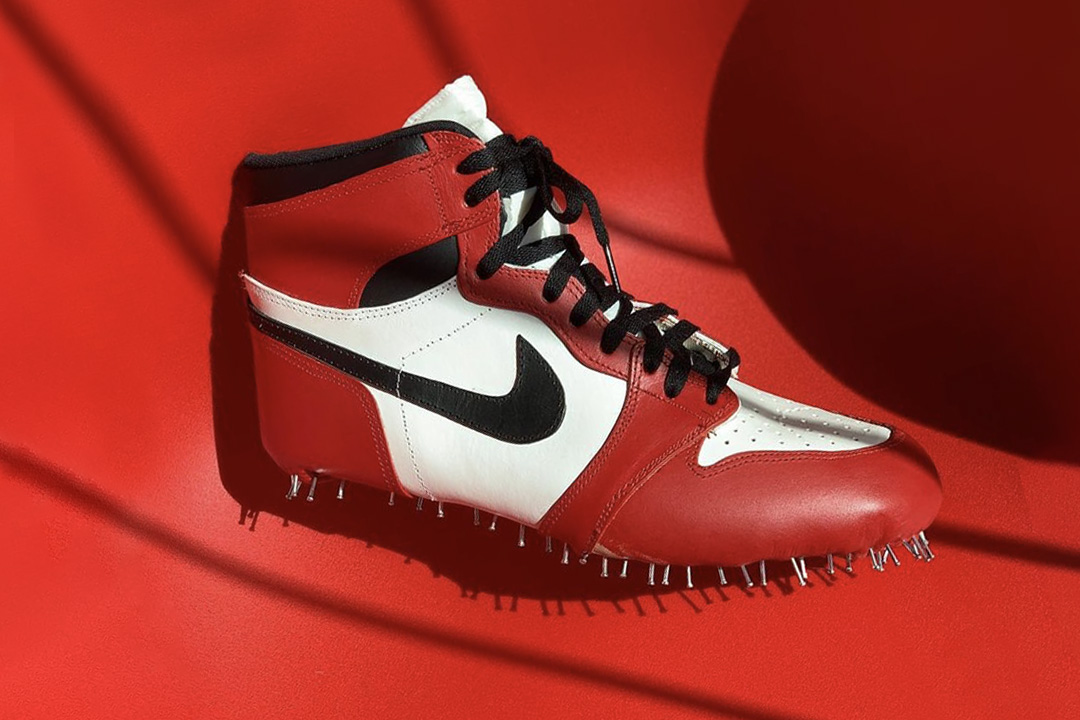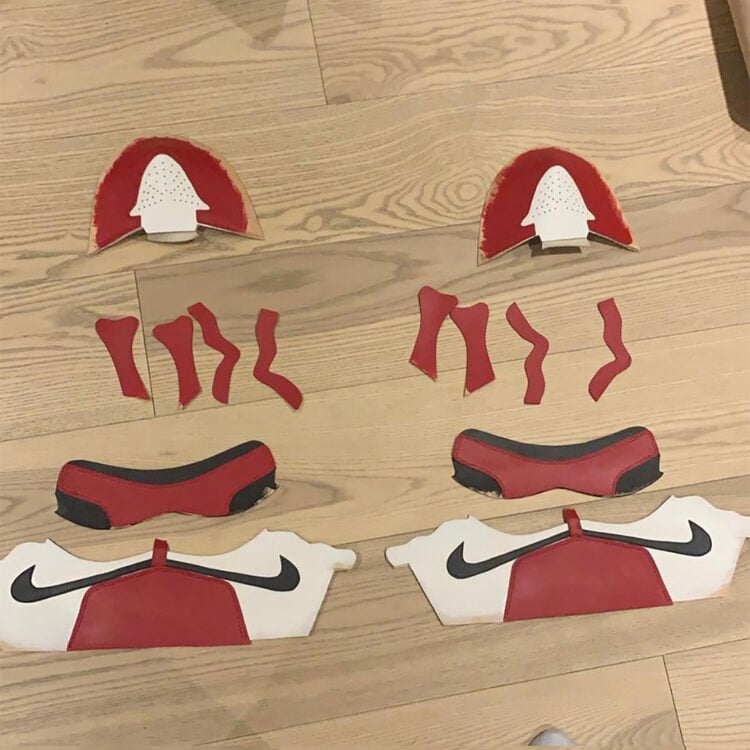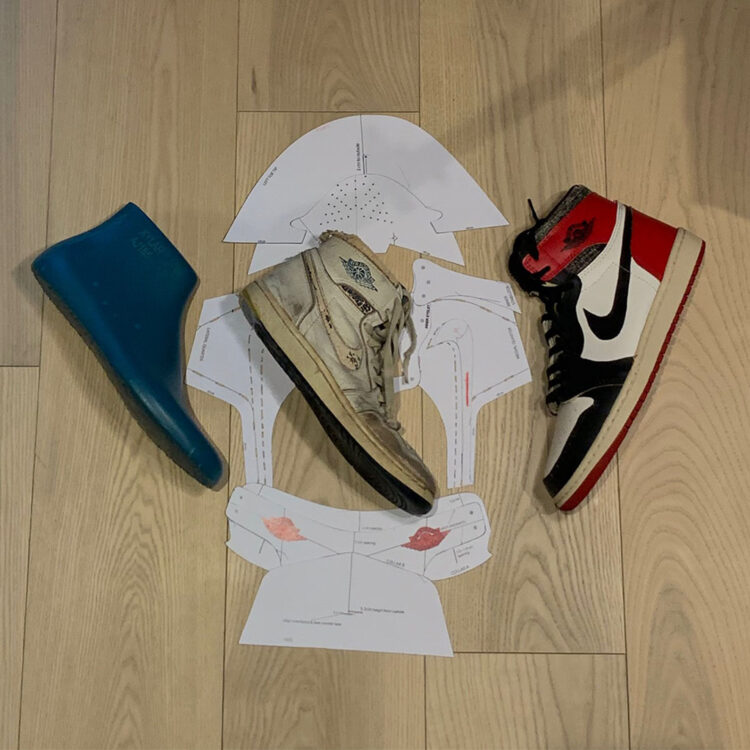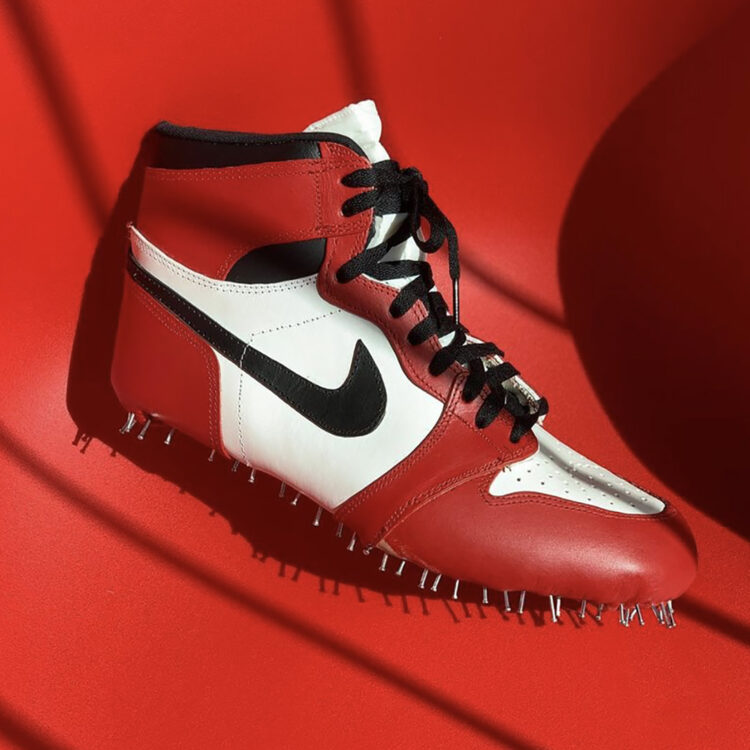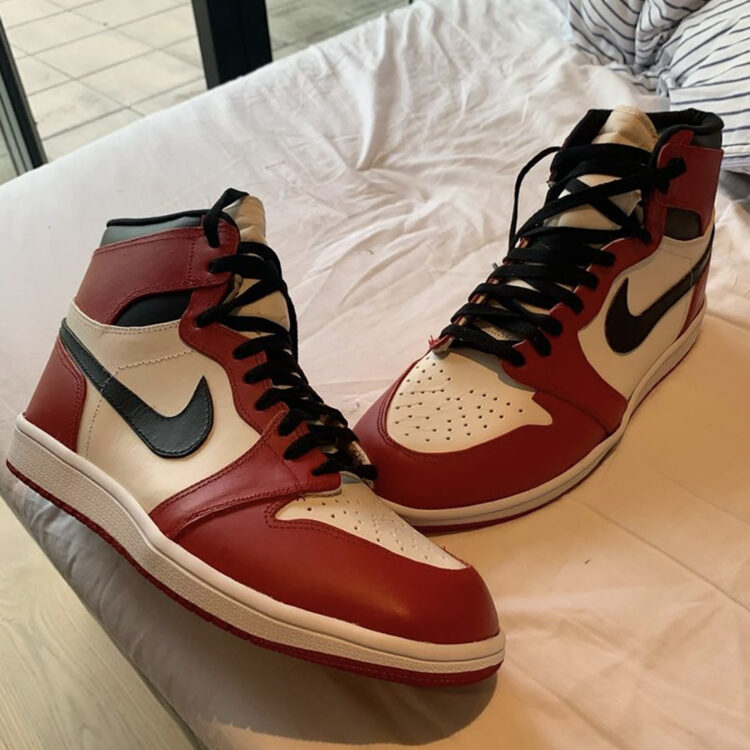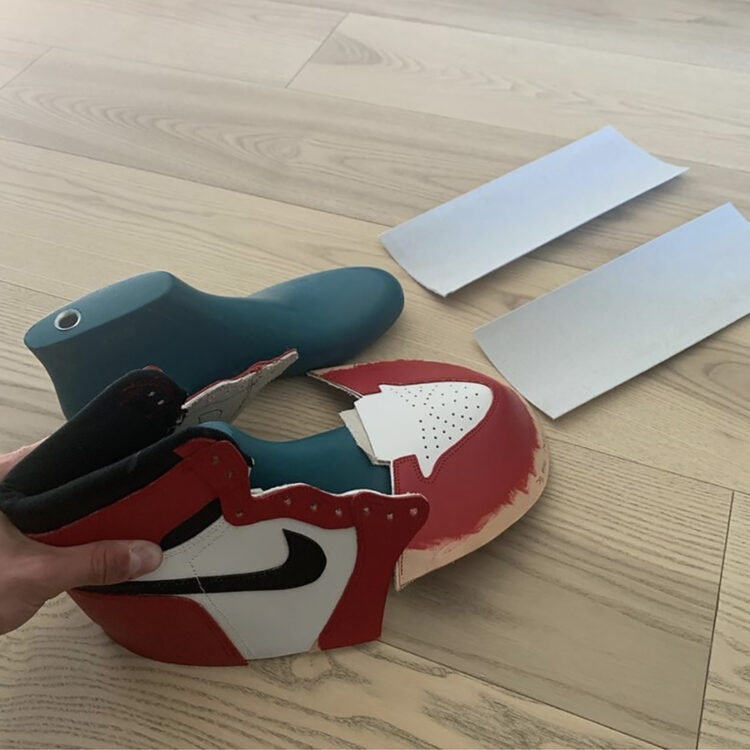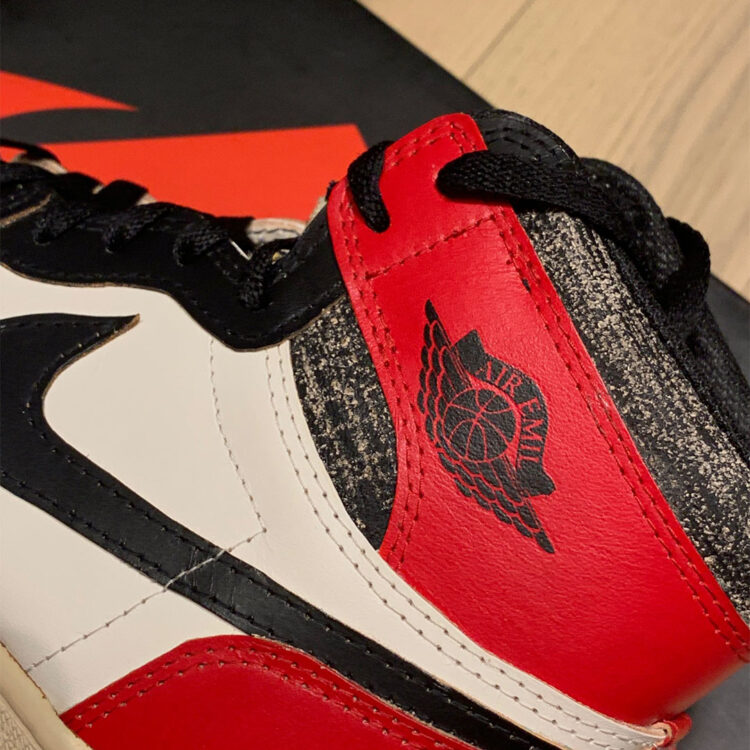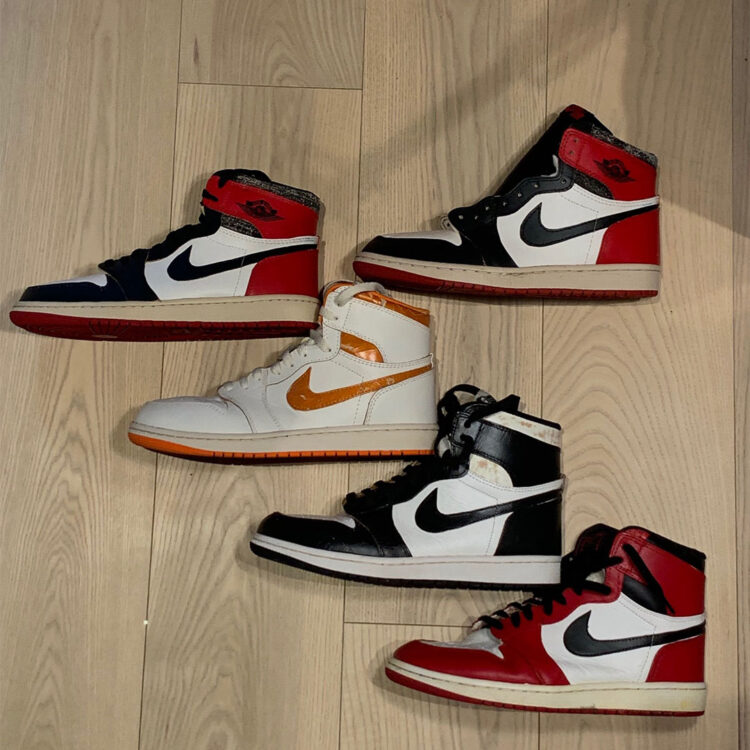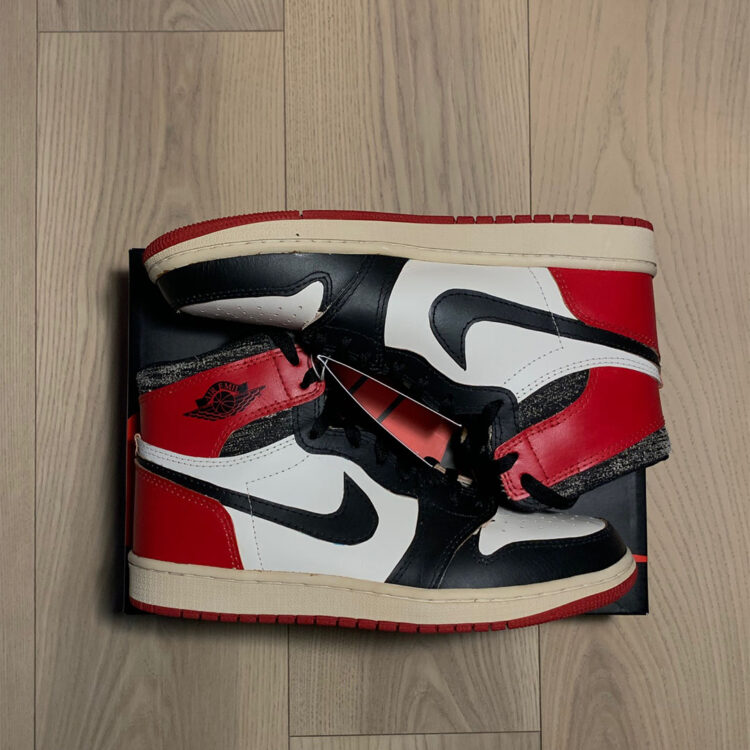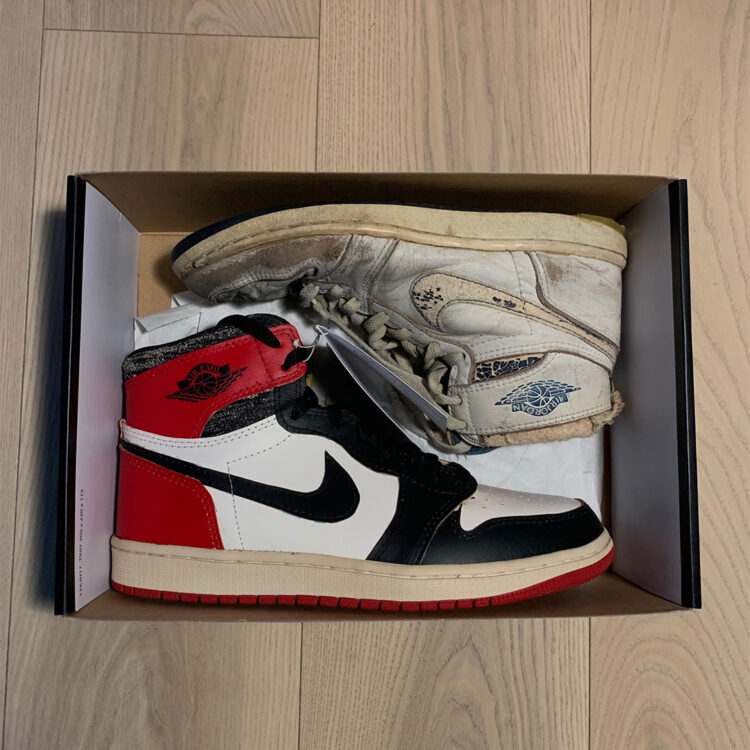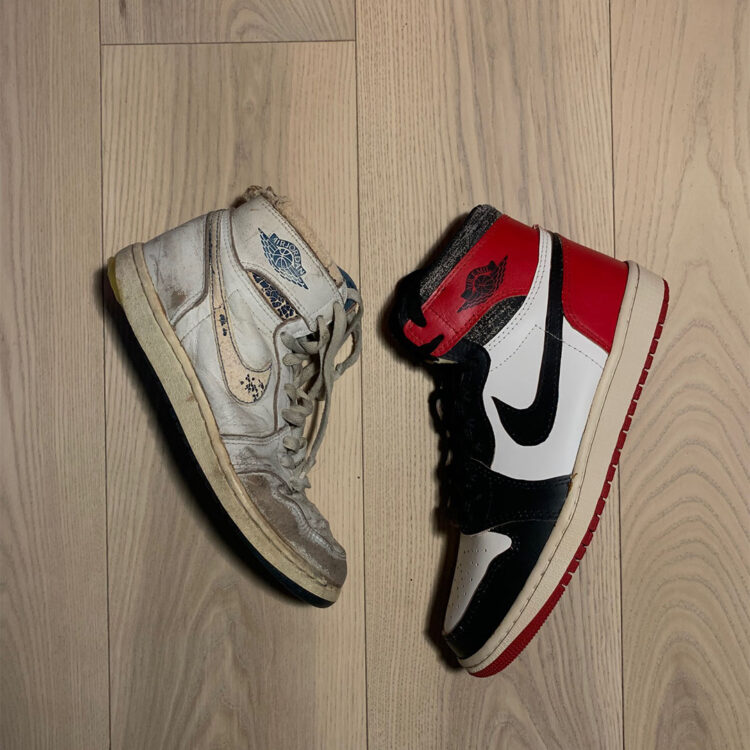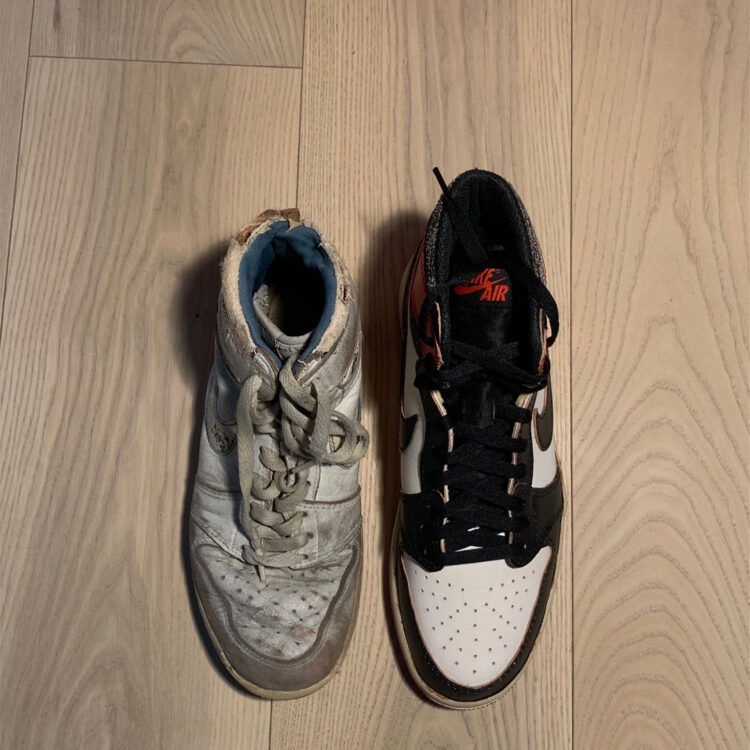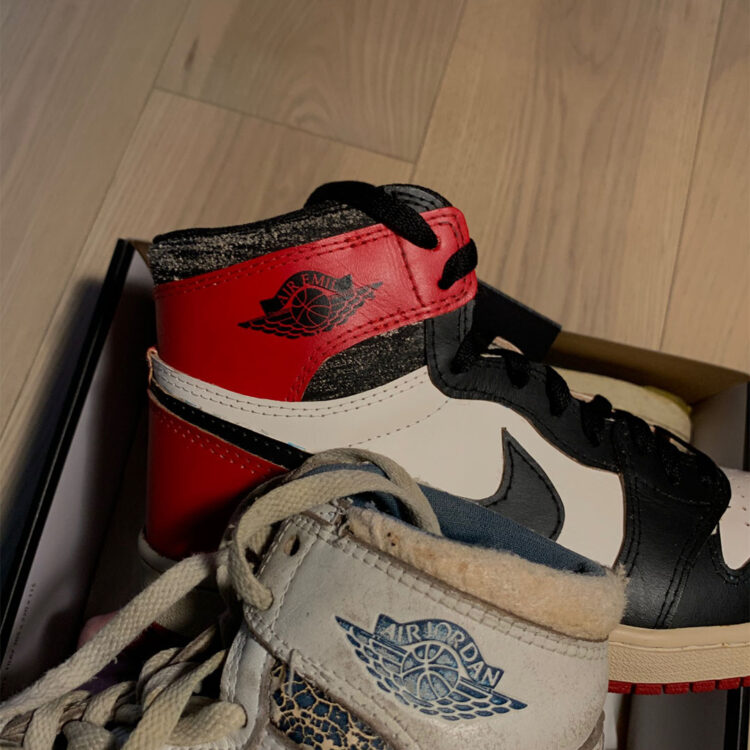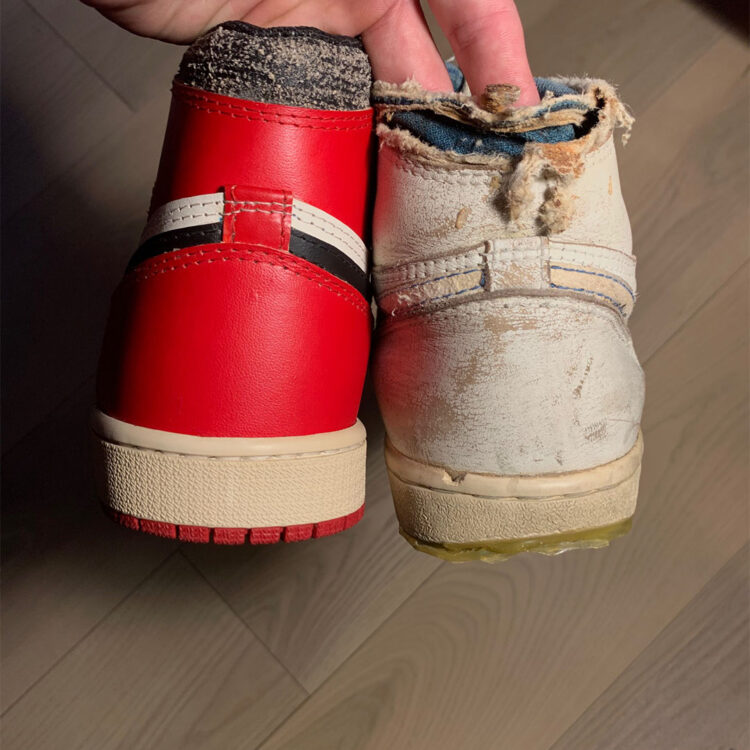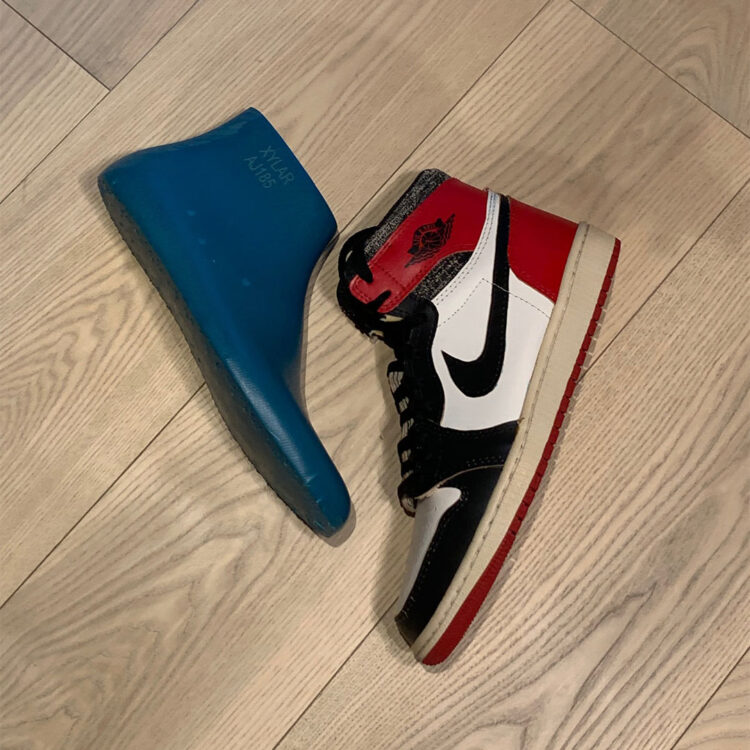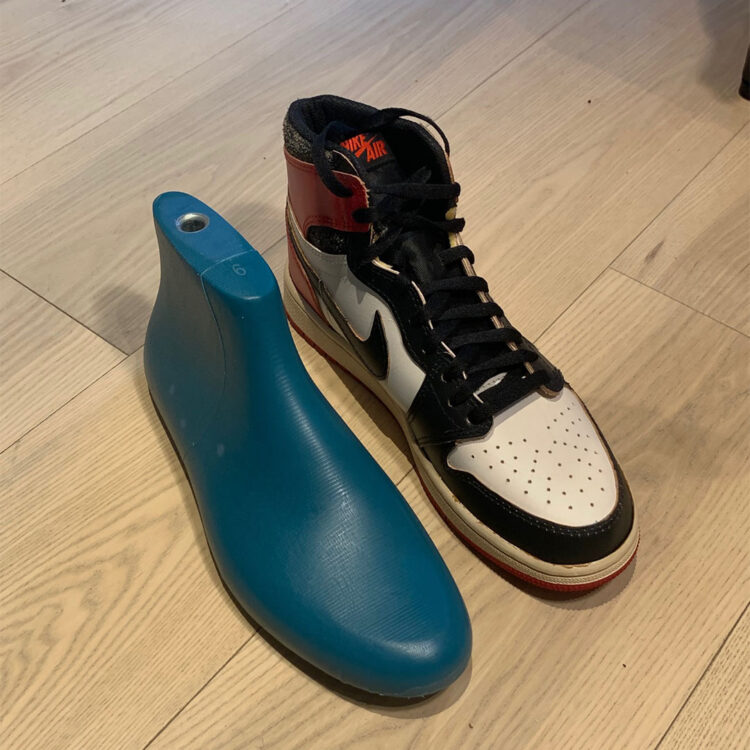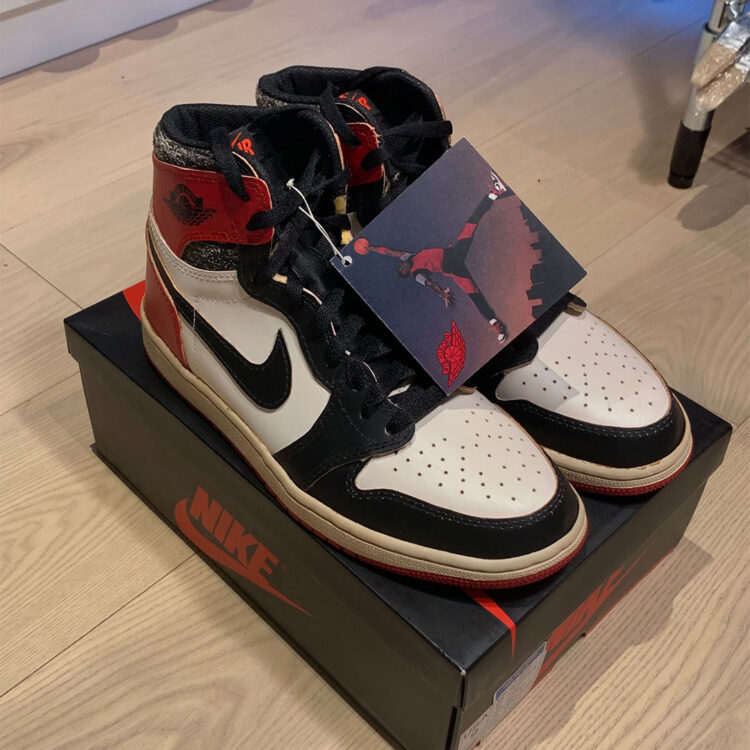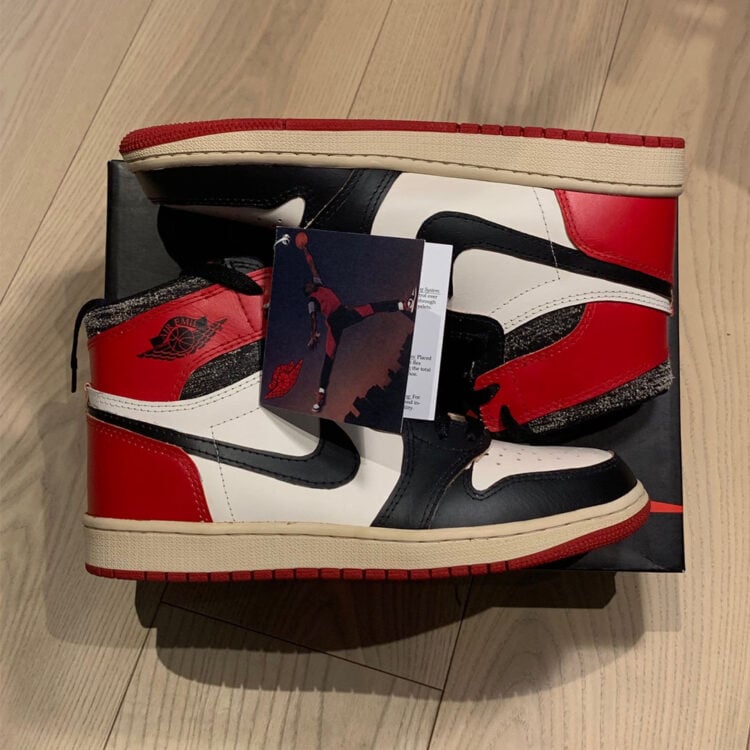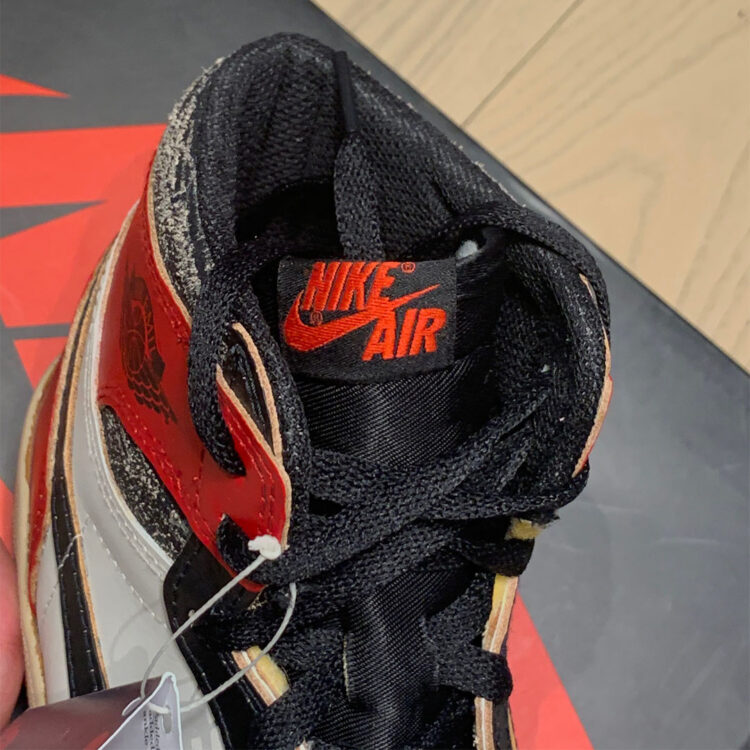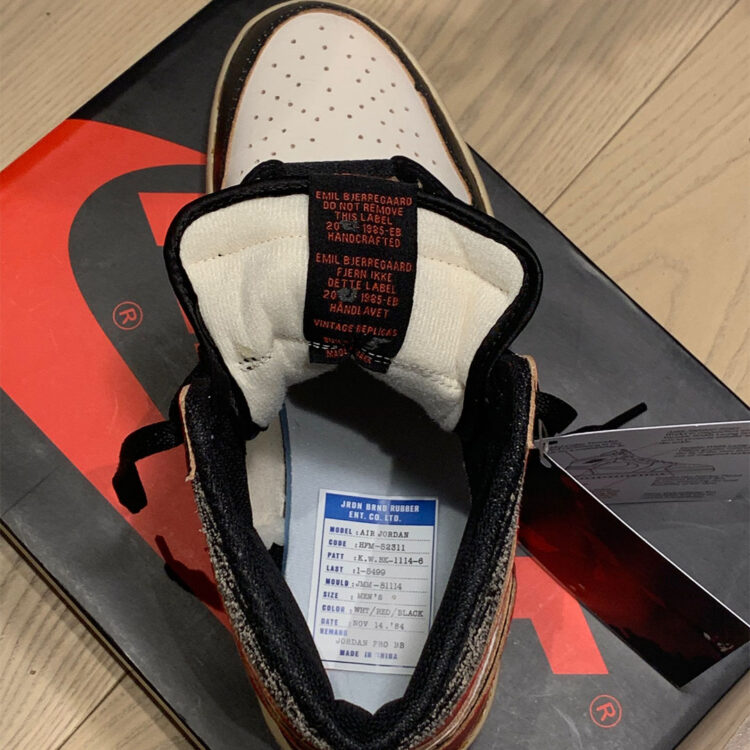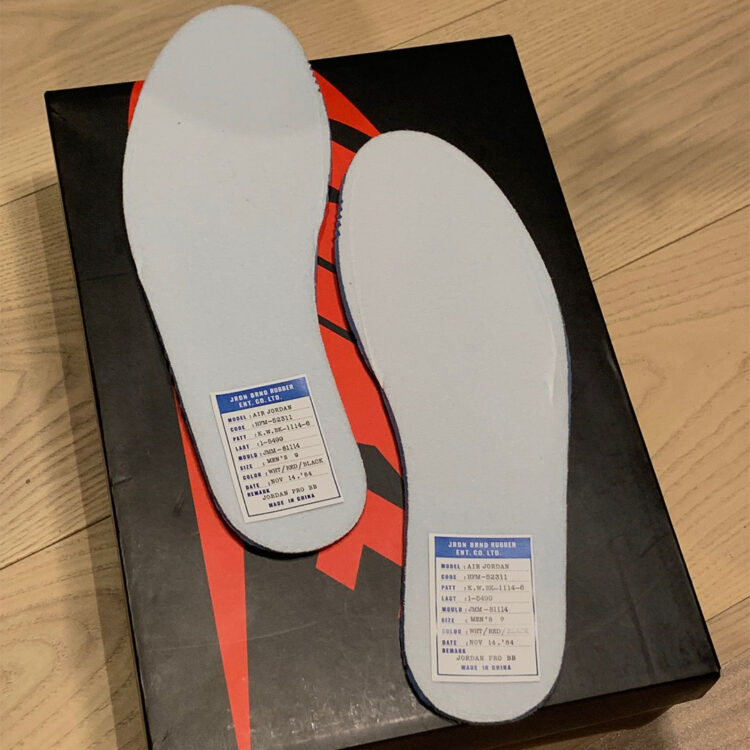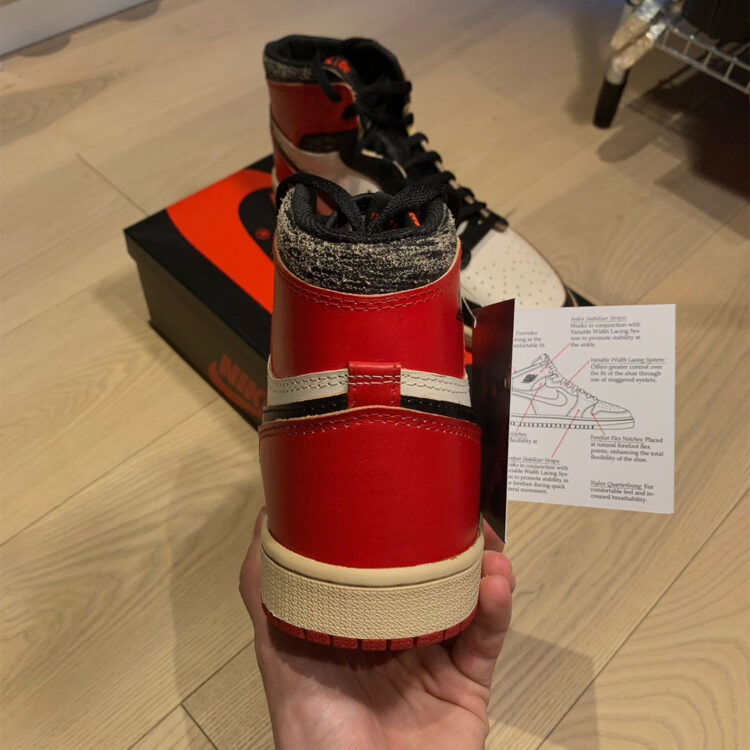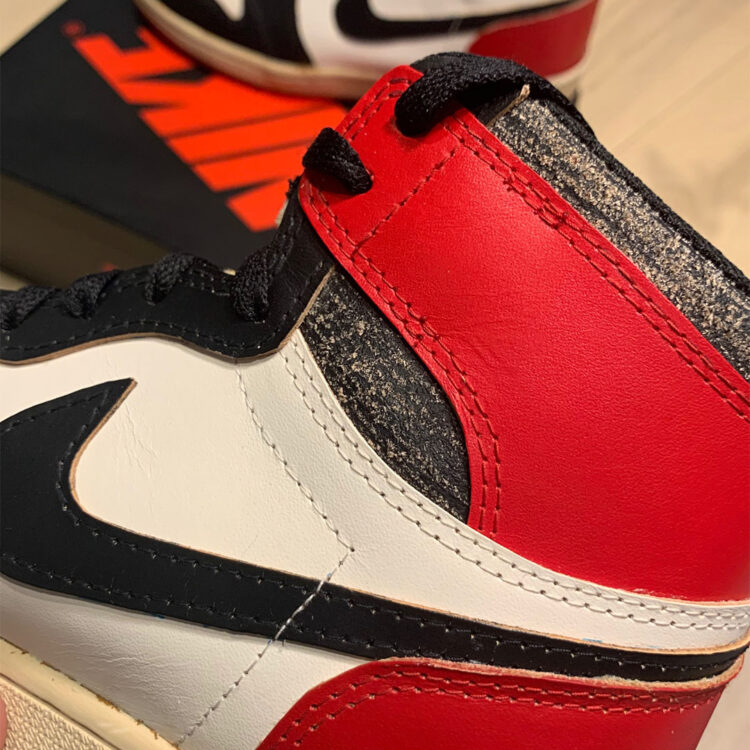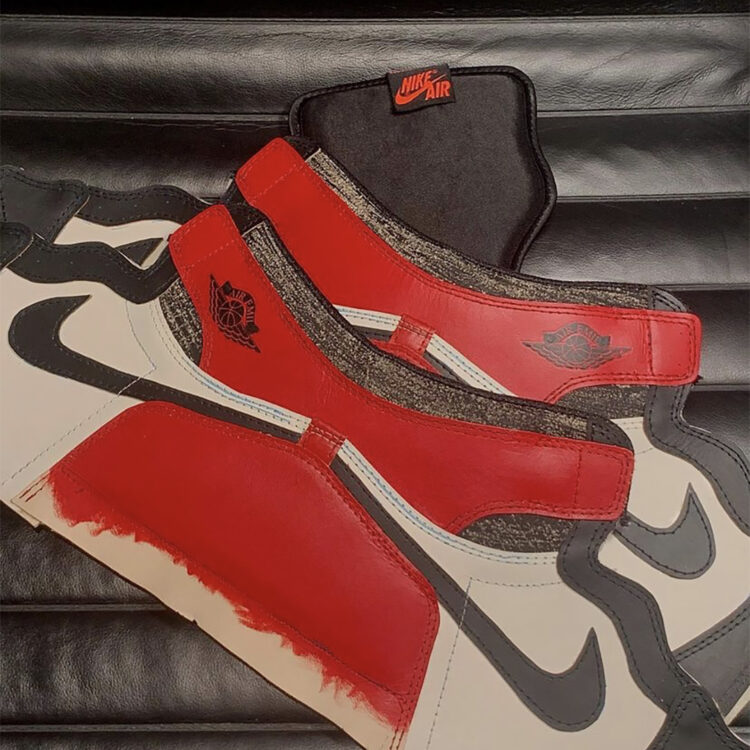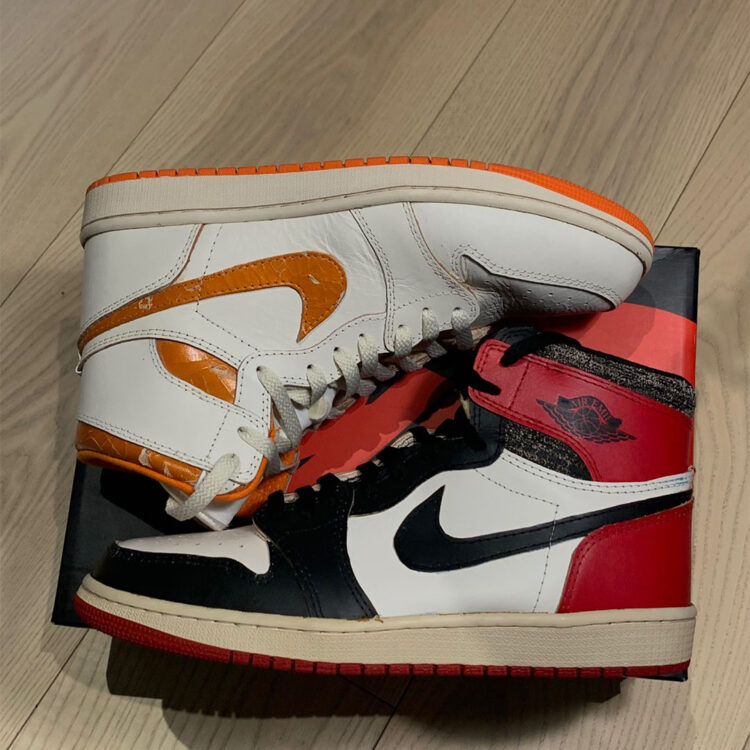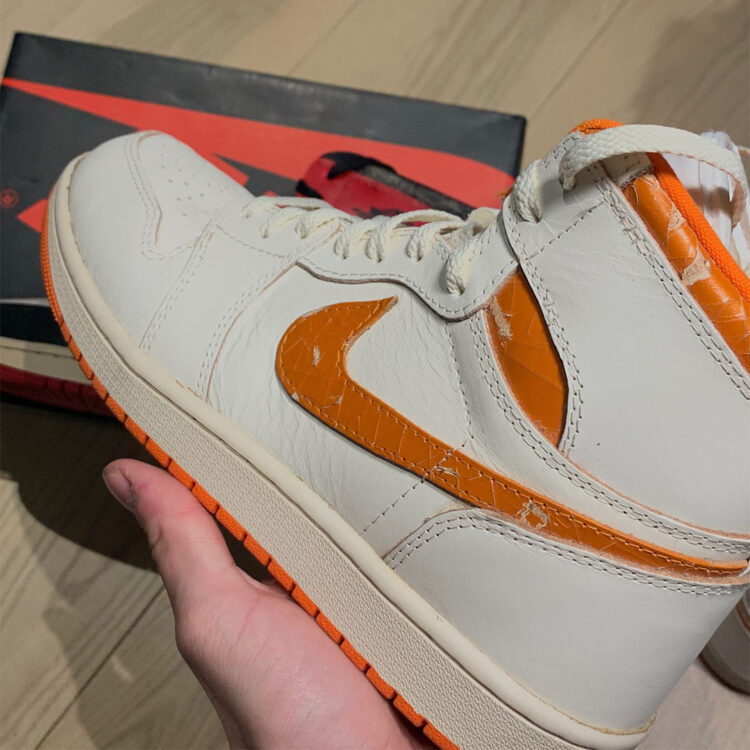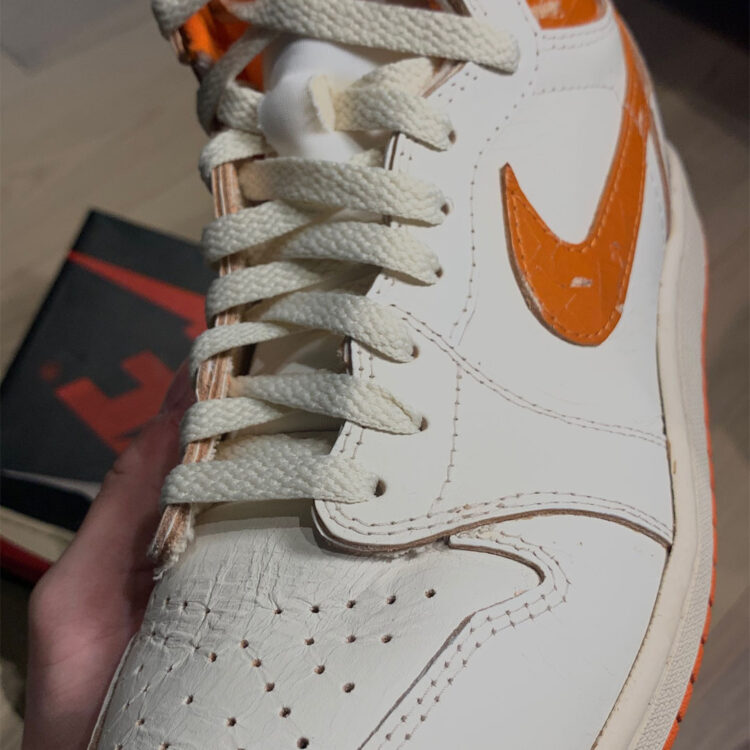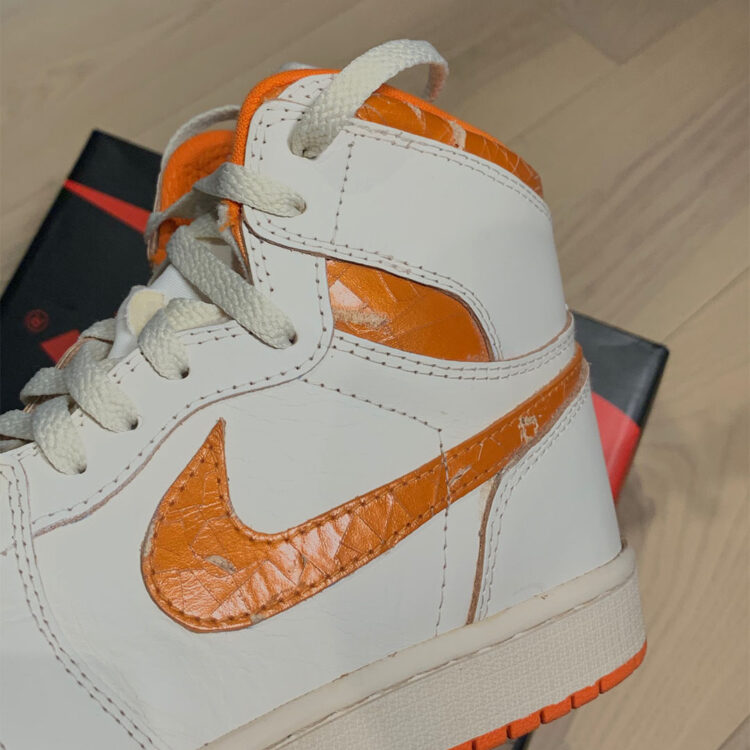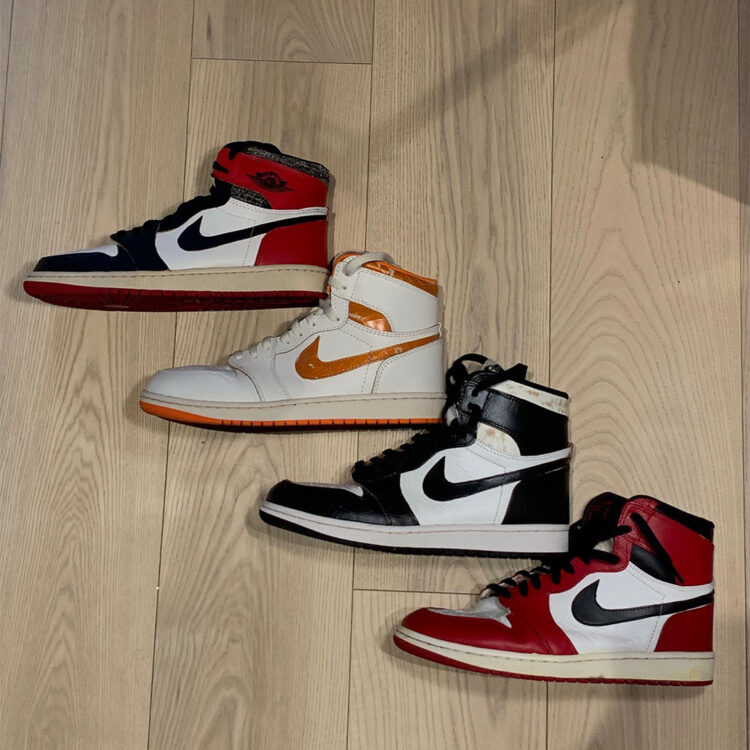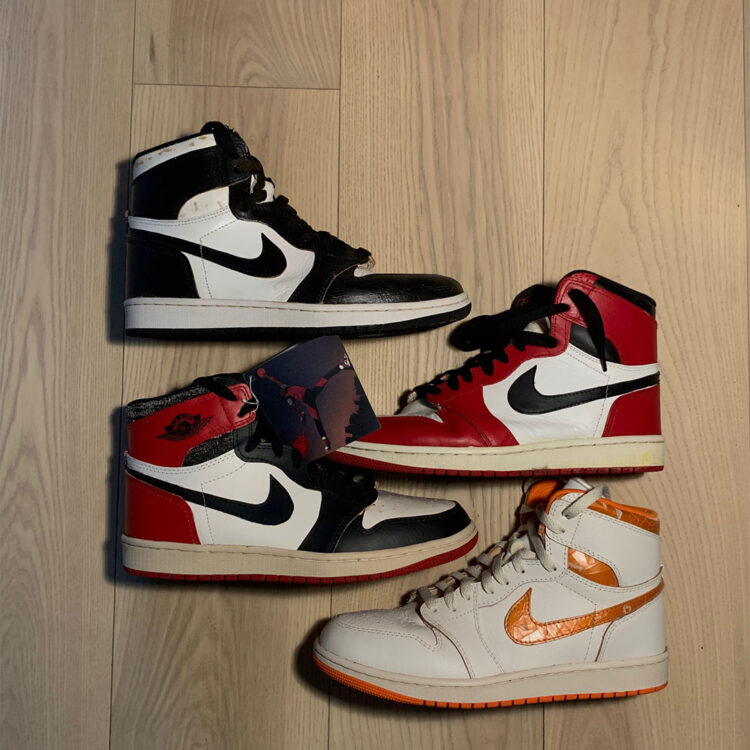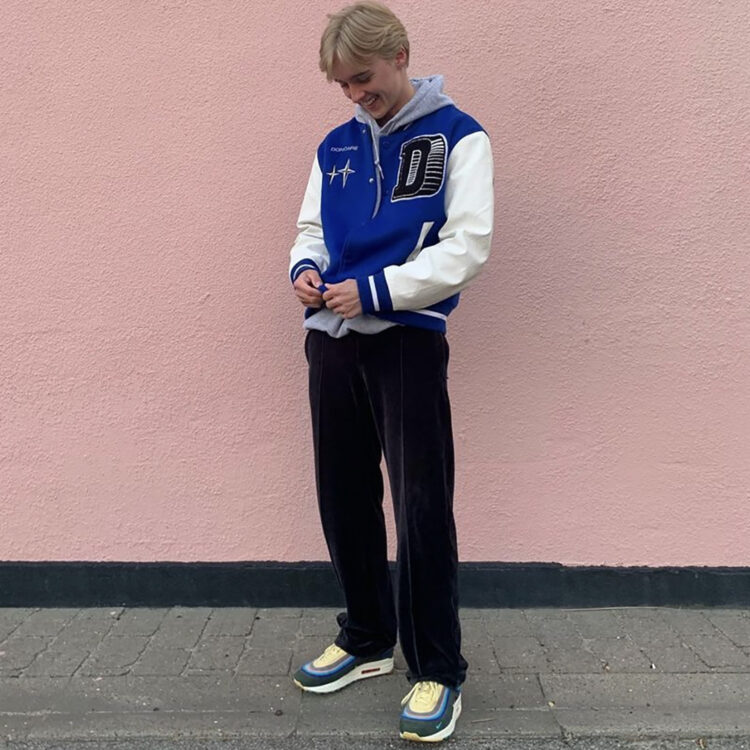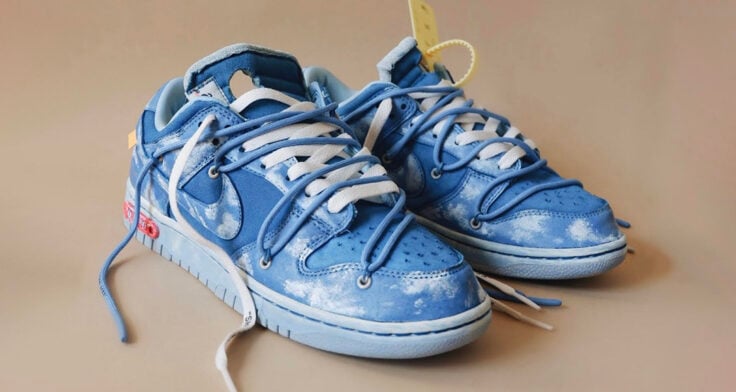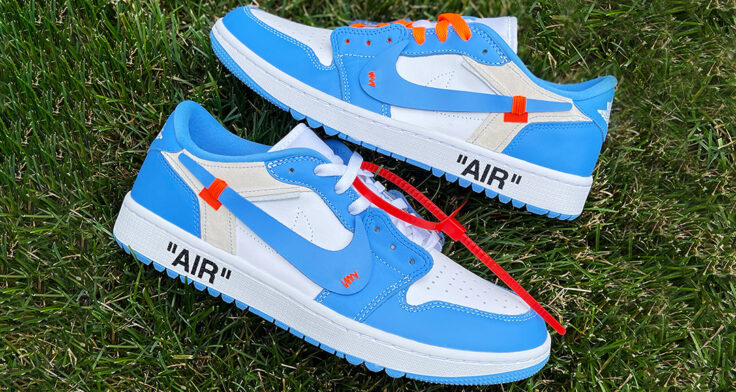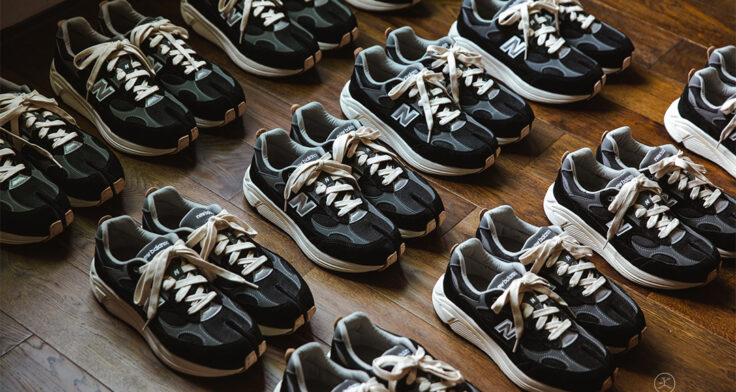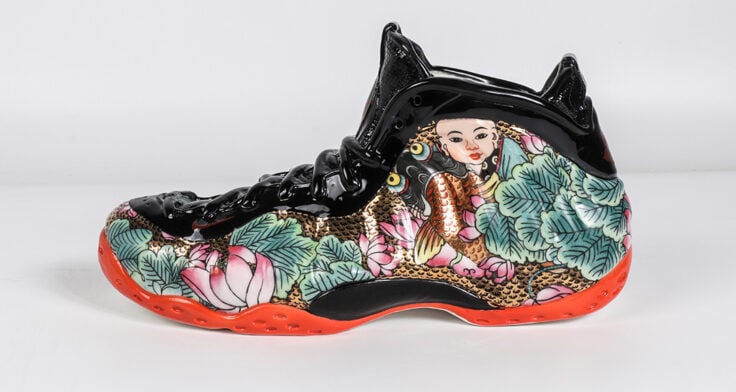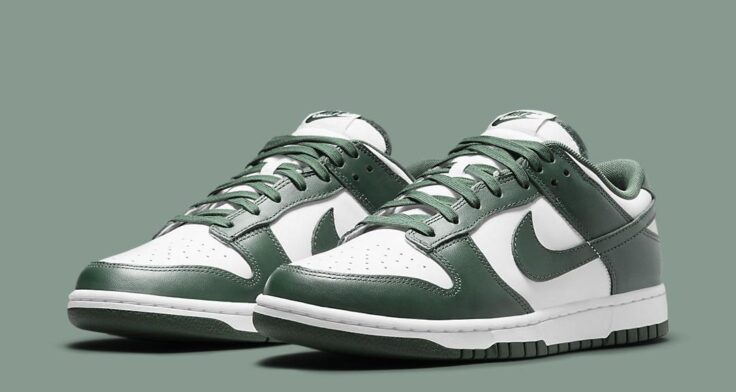Typically when thinking about sneakers, people imagine potential colorways or dream collabs, but rarely do people look at sneakers and think – “I can make those.”
For Emil Bjerregaard, this seemed like the logical option when he couldn’t get his hands on a 1985 Air Jordan 1. The idea sparked when Emil came across a video from Max Hanke on Instagram.
“When I was in high school, Max made a video of the pair of Chicagos he made,” said Emil. “One of my buddies sent it to me, and we were chatting a little bit about us wanting to get 85’s. Then, because we saw his video, we were like, ‘We could make a pair!'”
Of course this idea seemed far-fetched and Emil eventually laughed it off. Another six months went by and Emil hadn’t even given the idea a second thought, until one day when Max revealed a new Air Jordan 1 “Metallic Orange” that he made. Emil was stunned at how much Max had improved and decided that crafting his own pair of Jordans was something he wanted to get serious about. In Denmark, it’s quite common that students take a gap year between high school and college to spend time doing whatever they like, and Emil decided that he would use his gap year to pursue making sneakers.
“When Max made his new video on Metallic Oranges, I could see the progress from becoming a decent pair, to the perfect pair,” said Emil. “At that point, I was in the middle of my last few exams in high school and I was like, ‘Okay, I’ll just start looking into materials, tools, and what I need.’ I started counting my money and how much it would cost. I did that and couldn’t wait, so I just started slowly buying all the stuff I needed.”
As you can imagine, the idea of hand-crafting a pair of Jordans from scratch seems daunting, but Max Hanke has been a blessing to bespoke sneaker creators like Emil. Max is a student at Parsons and finds joy in being a multi-faceted artist. Max was able to carefully deconstruct a 1985 Air Jordan 1 “Metallic Blue,” allowing for aspiring sneaker creators like Emil, to have access to the original pattern. With influences like Max, a budding bespoke sneaker community is starting to awaken online.
“I bought Max Hanke’s pattern, where he digitized all the leather pieces and made the pattern out of it,” said Emil. “Max was my only inspiration. Then after that, as I started getting into the community, and making my Instagram, I’ve met so many other bespoke sneaker creators, who inspire me of course, but Max was the primary source.”
While Max made getting started accessible, Emil admits that getting started wasn’t necessarily easy. Prior to this, Emil had absolutely no experience. He had always been interested in sneakers, but had never considered the design aspect of things.
“I had never used a sewing machine,” said Emil. “Not in school or anything before I bought this. I remember the first thing I sewed was my name on an old t-shirt, just with the thread that was in the machine. I tried to figure out [how it worked.] Then I cut a piece of leather and tried to figure out how it worked on leather. Then I just started on the pair.”
Emil makes it sound simple, but in reality, he spent a lot of time researching what it would take to get started. He was able to buy half a cow’s worth of leather from the United States for around $150, and then sourced the rest of the materials at home in Denmark. Finding the right sewing machine was the most important part, and proved to be the most difficult task yet.
“The primary expense was tools. I had to go about finding the correct sewing machine because I had to find a sewing machine that didn’t cost $2,000 and could sew through six millimeters of leather and fabric, and could handle the tension that the thread needs. I actually found an old sewing machine from 1939. Somebody had found it in their grandmother’s home after she passed away or something, so I got it for like $130. It still had the user manual from 1939, which was quite impressive.”
With almost anything now, we have the luxury of being able to hop on YouTube and problem solve as we go, but with a machine this old, troubleshooting wasn’t as easy. Emil depended on this user manual a lot, but still came across a recurring obstacle.
“I had some problems with the tension,” said Emil. “I went to a local sewing machine repairer, and it was this old man who was very hardcore in his tone, and he was like, ‘Why the fuck did you buy this?’ I told him I needed to make shoes and he shook his head.”
This ended up being a common response that Emil would receive when he would tell people that he was interested in making shoes. People often didn’t take him serious or didn’t think he would actually be able to pull it off, making for a disheartening start into his first creative venture.
“When I started launching the idea to my father, he was like, ‘No.’ And I was like, ‘Yes, I can do this!’ And he just said, ‘Okay, well, you will figure out really quick that you can’t make a pair of shoes. And then I was like, ‘Fuck, is he right?’ I think out of all the people I talked to, like three people said, ‘Wow, do it.’ So it wasn’t easy to get started, but quickly they all realized it was beginning to look like a shoe.”
To start, Emil began crafting his first pair of sneakers with intentions to make his very own Air Jordan 1 “Chicago.” This process is definitely a labor of love, and a costly one at that, as the time and money it took to make these shoes could almost afford you a new pair off StockX.
“The first pair I think I spent about 200 hours, including research and making the pair. The price of the first pair was [around] $1,400 in total. It was expensive and shipping was mad because I needed one tool from eBay, and then one tool from Amazon, and then customs, and all that stuff. The first pair was a pair of Chicagos. They’re a disaster, but they’re my pair. I’m still proud of them. They have so many errors and flaws.”
Emil just finished his 5th pair of sneakers and is finally starting to get the hang of his craft. Yet even with the amount of experience under his belt, he still finds himself getting stuck. Emil isn’t afraid to take his sneaker apart or start over, but there’s a certain area that he only gets one shot at, and it happens to be a common problem area for all shoe-makers. To construct the silhouette, the process calls for a tool called a “last.” The last is a mold that’s made in the shape of a foot, in which shoe-makers craft the silhouette around. Emil explains the process of “lasting” the shoe, and how it can make or break the design.
“The first two pairs, I lasted them wrong,” said Emil. “Lasting is when you’re done sewing the whole shoe, you put it over [the last], and you pull all the leather down. The toebox area is a problem. It’s a struggle for every new shoe-maker. Pulling the leather far enough down, to make it lay flat against the last, it’s very hard, and that was what I was struggling with. So basically the first two pairs were too high in the heel and too bulky in the toebox because they were lasted wrong.”
It wasn’t until Emil’s third attempt, the Air Jordan 1 “Metallic Orange” pair, that he made a pair of sneakers that actually fit him. Emil was so proud of them that they sat on his shelf for months before he finally wore them out on his 20th birthday. Emil has gone as far as making his very own “Air Emil” tags and corresponding Wings logo, which brings copyright questions to the table, and furthermore, Emil’s Instagram handle – @emilgetssuedbynike.
“Obviously, I hope I don’t get sued by Nike,” laughed Emil. “It’s a fun name. It makes people wonder and ask, ‘What is this?’ I think at the time, [Nike] had just sued that Warren Lotas guy, and I was like, ‘Okay, this profile probably won’t be getting any more followers than like 100 people. Nobody wants to see me mess up shoes.’ Now I have 500 followers or something, and I haven’t done a single thing to boost my profile or anything. I’ve just uploaded my errors and mistakes, and people want to see that.”
Almost every creative industry is ridden with gatekeeping and the sneaker industry is somewhat notorious for its pretentious position amongst pop culture. It’s refreshing to see creatives like Emil being open to sharing their process and not being afraid to show his mistakes.
“I actually only made the Instagram for myself to look at,” said Emil. “I wanted to post every single process of the first pair. Then I wanted to go back on my second pair and look, and correct what I did wrong. Then I started getting followers. At first I thought it would be only my friends and family. Now 500 people are following and I think it’s because people like to see the background of the pair; of the process. I haven’t found anyone else that does it like I do. Sometimes I feel like it gets a bit much for my followers, but I also want them to see what I see when making a pair, and feel the frustration I feel when I do something wrong. When I figure out I messed up five steps ago, and I have to go back, and take the stitching off — I think people like that, at least my followers do.”
Handcrafting sneakers is a meticulous process. Even with a pattern, experience, and all the right tools, there’s still always room for human error. It’s been almost six months since Emil first started making sneakers, and while he’s getting better, sneakers remain mostly a hobby to him. During the day, Emil works at the hospital as a porter. This entry-level position is highly valuable to Emil as he needs the hospital experience so he can begin to study medicine. Emil dreams of becoming a surgeon one day, where he’ll be able to put his precise composure and steady hands to work.
“It’s weird because I feel like I was born with ten thumbs,” laughed Emil. “Before I started doing this, I couldn’t make anything at all. I couldn’t sew anything, I couldn’t draw. But now that I’ve been so practical with my hands and made shoes, I feel like it’s much more interesting to make stuff.”
In the end, this really is a labor of love for Emil Bjerregaard. Enjoying the journey and learning to welcome error has allowed him to stay passionate about this project. He hopes that one day he’ll be good enough to make pairs for interested buyers, but in the meantime, he’s just focused on creating the perfect pair for himself. It’s all about trusting the process.
“[My sneakers] are nowhere near perfect yet – for me. I mean, for others, they might be. But I will work as hard as I can until I have the perfect shoe. I think my next shoe I make will be perfect, where I can take pictures and I can say, ‘Okay, I made the perfect Jordan 1, 1985. I hope that will be the next pair. I think it will be because all the things that are missing now, are just so small, that it can be corrected so easily. It’s really just about taking your time. You can make the perfect shoe, it just takes time and error, that’s all. Time, error, and correction.”
—
